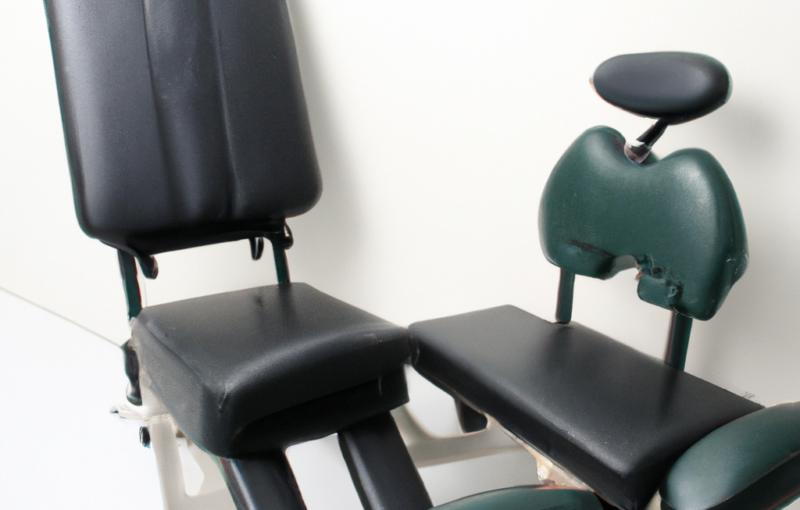Imagine sitting on a chair that not only feels comfortable but also promotes better health. That’s the allure of saddle seats – a unique alternative to traditional chairs that has been gaining popularity for its ergonomic design and numerous health benefits. In this article, we will delve into the world of saddle seats, exploring their advantages, applications, and the difference they can make in our daily lives.
Understanding Saddle Seats
At its core, a saddle seat resembles, well, a saddle. It mimics the shape and contours of a horse saddle, allowing the user’s legs to naturally fall on either side of the seat. This design is in stark contrast to the conventional flat surface of regular chairs. The ergonomic advantages lie in the way saddle seats encourage a “straddle” posture, promoting an open hip angle and maintaining the natural curve of the spine.
The Ergonomics of Saddle Seats
The ergonomic benefits of saddle seats are manifold. By positioning the pelvis in a neutral position, saddle seats reduce stress on the lumbar spine and lower back. This can help alleviate discomfort and prevent chronic pain caused by poor posture. Additionally, sitting in an open hip angle can enhance circulation in the legs and reduce pressure on the lower extremities.
Comfort Features of Saddle Seats
Saddle seats come with various comfort-enhancing features. Thick padded cushions provide ample support and cushioning, ensuring a pleasant sitting experience. Moreover, many saddle seats offer adjustable height and tilt options, allowing users to find their optimal position for maximum comfort.
Saddle Seats for Office Use
The office is where many of us spend a significant portion of our day, often in front of a computer screen. Using a saddle seat in the office can promote better posture and spinal alignment, which, in turn, can boost productivity and concentration. Employees may find themselves more engaged in their work when physical discomfort is reduced.
Saddle Seats in Medical Settings
Beyond office use, saddle seats have found applications in medical settings. Healthcare professionals, such as dentists and surgeons, benefit from the improved ergonomics of saddle seats during lengthy procedures. Patients, too, experience greater comfort during consultations and treatments.
Saddle Seats for Artists and Musicians
Artists and musicians often spend long hours honing their craft. Saddle seats provide the necessary support and comfort, enabling them to focus on their creativity without being hindered by physical strain. Whether it’s painting, playing an instrument, or sculpting, saddle seats can make a notable difference.
Saddle Seats and Posture Correction
If you struggle with maintaining good posture, saddle seats can be a game-changer. The unique shape of the seat encourages the pelvis to tilt forward slightly, which naturally aligns the spine in a more upright position. Over time, this can help correct posture issues and reduce the negative effects of prolonged sitting.
Potential Health Benefits
The advantages of saddle seats extend beyond comfort and posture. By encouraging better alignment, these seats can alleviate pressure on the spinal discs and reduce the risk of developing musculoskeletal disorders. Furthermore, the improved blood circulation resulting from the open hip angle may have positive effects on overall health.
Who Can Benefit from Saddle Seats?
Saddle seats are versatile and can benefit various individuals. Whether you work in an office, a medical facility, or engage in creative pursuits, a saddle seat can be a valuable addition to your workspace. It’s particularly suitable for those with back pain, postural issues, or individuals looking to improve their sitting experience.
Choosing the Right Saddle Seat
When selecting a saddle seat, consider factors such as the height and weight capacity, the quality of padding, and the materials used. Trying out different models in person can help determine which seat provides the best fit and support for your body.
Tips for Using Saddle Seats Properly
For new users, it may take some time to get accustomed to the saddle seat’s unique design. Start by gradually increasing the time you spend on the seat each day. Additionally, ensure that the seat is properly adjusted to your height and comfort preferences.
Addressing Common Concerns
Some individuals may experience initial discomfort when transitioning to a saddle seat. This is normal, and it often takes a short adjustment period for the body to adapt to the new posture. Moreover, while saddle seats share similarities with exercise balls, they offer distinct advantages, such as a stable base and back support.
Long-Term Implications
The long-term implications of using saddle seats can be profound. By promoting good posture and reducing stress on the spine, these seats may contribute to improved back health over time. However, it’s essential to use saddle seats in conjunction with breaks and regular movement to maintain overall well-being.
Conclusion
In conclusion, saddle seats present a compelling alternative to traditional chairs, offering both comfort and health benefits. Their ergonomic design supports better posture and spinal alignment, making them suitable for various settings, from offices to medical facilities and creative spaces. Consider giving saddle seats a try and experience the positive impact they can have on your comfort and well-being.
…
Learn More